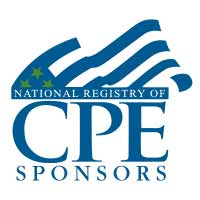Classroom Sessions:
| Date | Venue | Fees | |
|---|---|---|---|
| 15 - 19 Jul 2024 | Dubai - UAE | $5,950 | |
| 23 - 27 Sep 2024 | Istanbul - Turkey | $5,950 | |
| 18 - 22 Nov 2024 | Dubai - UAE | $5,950 |
Online Sessions:
| 23 - 27 Sep 2024 | Online | $3,950 |
INTRODUCTION
This GLOMACS Fundamentals of Reservoir Engineering training seminar introduces reservoir engineering concepts and methods to enable cross-disciplinary exchange of ideas and experience. It provides the required input to help you understand questions crucial to the reservoir engineer: How much oil & gas is there (accumulation)? How much can be recovered (reserves)? How fast can it be recovered (rate)? By the end of this GLOMACS Oil & Gas Technology training seminar, participants will have gained a foundational understanding of reservoir engineering that they can use while moving forward in their training.
This GLOMACS training seminar will feature:
- Discussions on the role of reservoir engineering in exploration and production as well as how reservoir engineers interact with other disciplines in the Petroleum Industry
- A description of Reservoir rock properties, Darcy’s Law and Fundamentals of fluid flow in a porous media
- A description of Reservoir fluid phase behaviour and reservoir fluid properties
- An Overview of well testing and application of the diffusivity equation
- An outline of different drive mechanisms and discussion of the recovery factors
- Principles of Material Balance and Decline Curve Analysis
- Use of fractional flow equations and Immiscible displacement concepts
- Definition of reserves, estimation of oil and gas in place and Production Forecasts
Objectives
By the end of this GLOMACS training seminar, participants will:
- Describe a hydrocarbon reservoir and list the fluids found in it
- Illustrate with diagrams how these fluids are distributed in a hydrocarbon reservoir
- Describe and explain porosity, permeability and fluid saturations
- Determine the properties of natural gas, oil and water
- Explain and define saturated reservoirs, undersaturated reservoirs, bubble point pressure, oil and gas formation volume factors, gas oil ratio
- Calculate the volume of hydrocarbon in place and recovery factors Derive the general material balance equation, modify it and use it to calculate hydrocarbon in place for gas reservoirs, saturated reservoirs and under saturated reservoirs
- Use the Havlena and Odeh technique to determine oil in place for saturated reservoirs and under saturated reservoirs
- Use of well testing data in determining average reservoir pressure, productivity index, permeability, and skin effect
- Discuss the recovery factors of different drive mechanisms
- Explain the use of fractional flow equations and Immiscible displacement concepts
- Perform decline curve analysis
Training Methodology
This GLOMACS Fundamentals of Reservoir Engineering training seminar will utilise a variety of learning techniques to ensure maximum understanding, comprehension and retention of the information presented. The daily workshops will be highly interactive and participative. This involves regular discussion of applications as well as review questions on each topic.
WHO SHOULD ATTEND?
This GLOMACS training seminar is suitable to a wide range of professionals but will greatly benefit:
- Petroleum and Reservoir Engineers
- Production and Operations Engineers
- Reservoir, Production and Operations Engineers
- Petro-physicists, Geo-physicists
- Geologists and Non–Engineers
- Managers who seek to derive greater decision making on field development
DAY 1
Reservoir and Reservoir Engineering Basics
- Introduction to Reservoir Engineering
- Reservoir Life Cycle
- Reservoir Environment and Formation Properties
- Identification of Contacts
- Definition of Reservoir Pressure
- Determination of Pressure Gradients
DAY 2
Reservoir Conditions
- Reservoir and Surface Conditions
- Formation Volume Factor, Viscosity, Solution Gas-oil Ratio, API Gravity, Specific Gravity
- Estimating Gas, Oil, and Water Properties from Correlations
- Application of Deviation Factor to Ideal Gas Law
- Darcy's Law and Fundamentals of Fluid Flow
- Relative Permeability Concept
DAY 3
Reservoir Fundamentals
- Principles of Well Testing in Reservoir Characterization
- Estimation of Average Pressure
- Application of Diffusivity Equation to Steady State, Semi-steady State and Unsteady-state Flow
- Applications of Line Source Solution to Determine Reservoir Pressure
- Overview of Well Testing Techniques
- Use of Well Testing
DAY 4
Reservoir Drive
- Reservoir Drive Mechanisms
- Principles of Material Balance Analysis
- Use of Fractional Flow Equations
- Immiscible Displacement Concepts
- Recovery Concepts
DAY 5
Reserve Estimation and Production Forecasting
- Definition of Reserves
- Recovery Factor-API Correlations
- Estimation of Oil-in-Place
- Estimation of Gas-in-Place
- Production Forecast – Decline Curve Analysis
- On successful completion of this training course, GLOMACS Certificate will be awarded to the delegates
- Continuing Professional Education credits (CPE) : In accordance with the standards of the National Registry of CPE Sponsor, one CPE credit is granted per 50 minutes of attendance
Endorsed Education Provider
GLOMACS is registered with the National Association of State Boards of Accountancy (NASBA) as a sponsor of continuing professional education on the National Registry of CPE Sponsors. State boards of accountancy have final authority on the acceptance of individual courses for CPE credit. Complaints regarding registered sponsors may be submitted to the National Registry of CPE Sponsors through its website: www.NASBARegistry.org
In Association With

PetroKnowledge
Our collaboration with Petroknowledge aims to provide the best training services and benefits for our valued clients

The Energy Training Centre
Our collaboration with Energy Training Centre aims to provide the best training services and benefits for our valued clients


